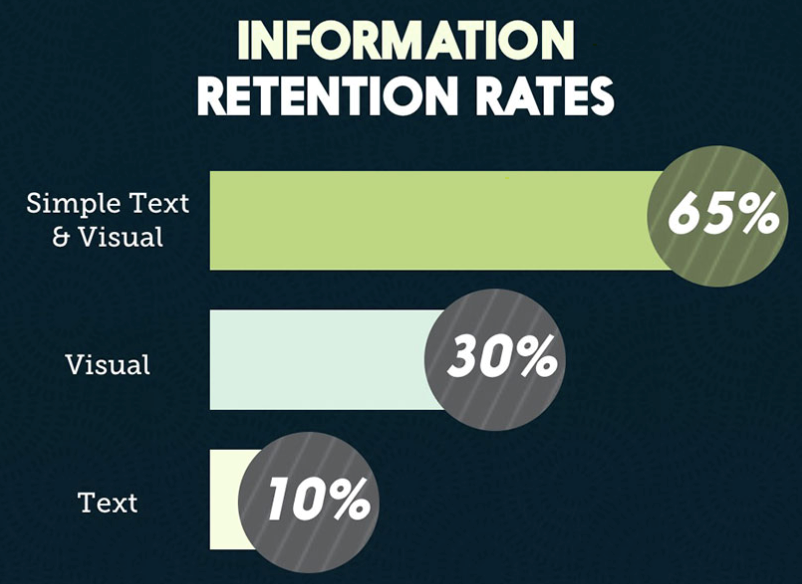In different ways, we retain all knowledge. It is not a hard or quick rule as to what is best for everyone, but it is usually appropriate if adults see, hear and do something. Adults retain approx. 10% of their vision, 30 % to 40% of their opinions and hearings and 90% of what they see, hear and do, according to the National Highway Institute.
If you think about it, it makes sense. There is a fair chance that you won't remember if I was to tell you a recipe or just write it down to read. But if I have told you about the recipe, showed you how to make it, and then encouraged you to do so, the chances will be much greater.
Memory Block:

But what about the architecture of the presentation? Well, the preservation of information is a vital aspect of successful design of the presentation. The research found that only 50% of the audience could recall what was said during the initial 10 minutes of the talk. Just 24 hours later, this is down to 25%. It's around 10 percent at the end of the week. Take the above information into account and these statistics will even vary according to the style of your presentation.
It's pretty worrying, isn't it? Business choices, after all, take time , particularly when investing in new ideas. It is doubtful that people would have the knowledge they need to make choices if you have almost forgotten what you said a week later.
So what should we do to ensure that the retention rates do not fall too dramatically? Simple: concentrate on 10%.
It could sound crazy, but unless you have an incredible memory like Sheldon Cooper, 10% is the best way to recall your presentation after a week. The main thing is to ensure that a particular number, catchy title, compelling picture or strong quote is remembered. That is why the quality and design of your presentation is important.
Keeping it clear:

It must be said, but your presentation 's meaning is obvious. Do not tell every detail to your audience-it is counterproductive to fill in text slides and to include irrelevant information just to fluff up your talk. Ensure that the key points are then pounded home.
Concentrate on what you want to know and plan to keep it short and concisely. You will feel comfortable enough if you are experienced in your field to answer questions you may have – you needn't get it into your presentation.
Keeping it visually appealing:

Visual learning for most of us. Think of kids' books of animals full of farmyards. It will not only be the name of the animal, written on a colourful typeface selection, but also the animal's image that accompanies it. Others may also have an audible sound button to be pressed.
This should be accompanied by your presentation. Use imagery supporting your figures, let the image speak more words than 5 long ballot points, and bear in mind that our retention rates jumble from 10% to 65% when images are used over texts under the Brain Rules of John Medina.
Keeping the content interesting:
Obviously, the audience would be more interested if you keep their message simple and concentrate on graphic design. When the audience is more engaged, they can listen and engage more likely. What if they listen to what communicate more likely? Bingo. There is a better likelihood that the information will be preserved.
Provide a handout for the closure:
This might sound old-fashioned, but you can give your audience a presentation if you want a foolproof way to ensure that your presentation is not put back on the memory list. Better still, you should also give people a copy of the presentation in PDF format to ensure that they have the main facts and statistics to determine at a later date.
And remember: keep it clear, keep it visual and keep it interesting and offer a hand if you want to hold people in mind long after your PowerPoint is done.
So next time when you design your favourite presentation lesson with Edmodo Classroom, you need to keep in mind that essence for a great presentation lies in its simplicity and designing them with a few key ingredients.

